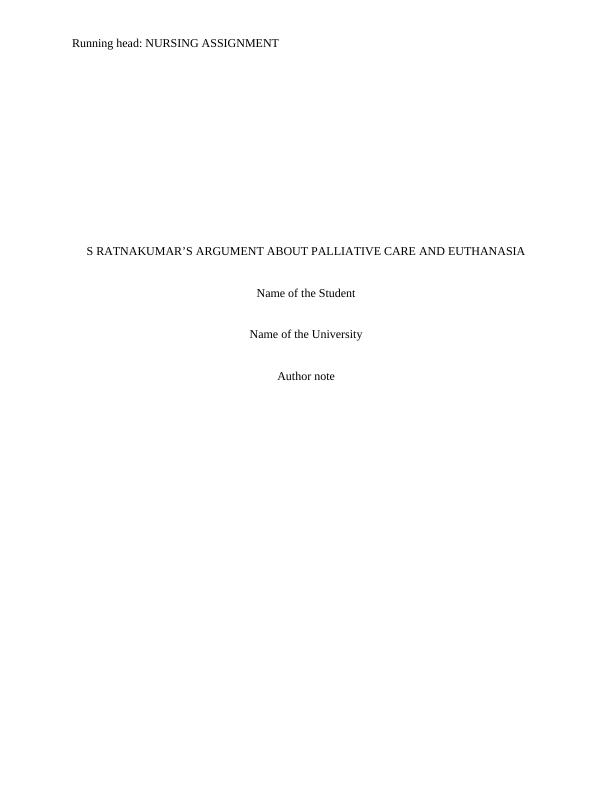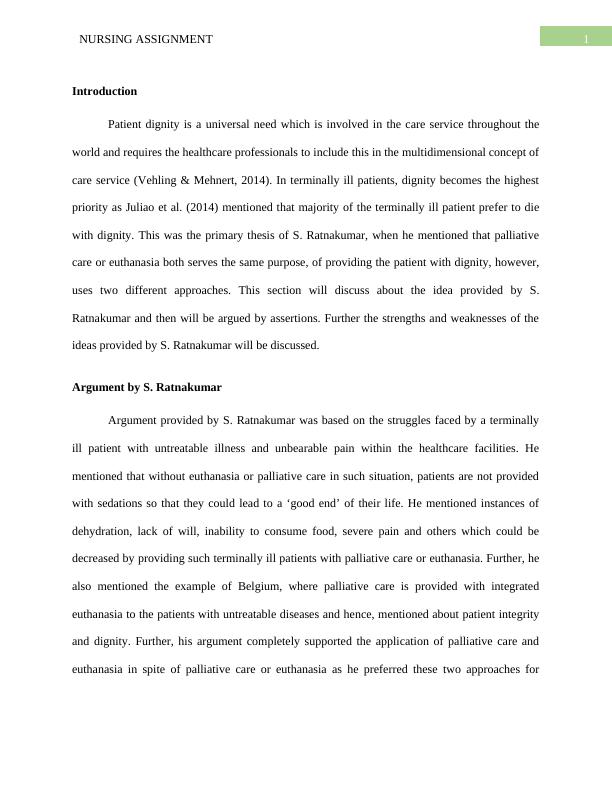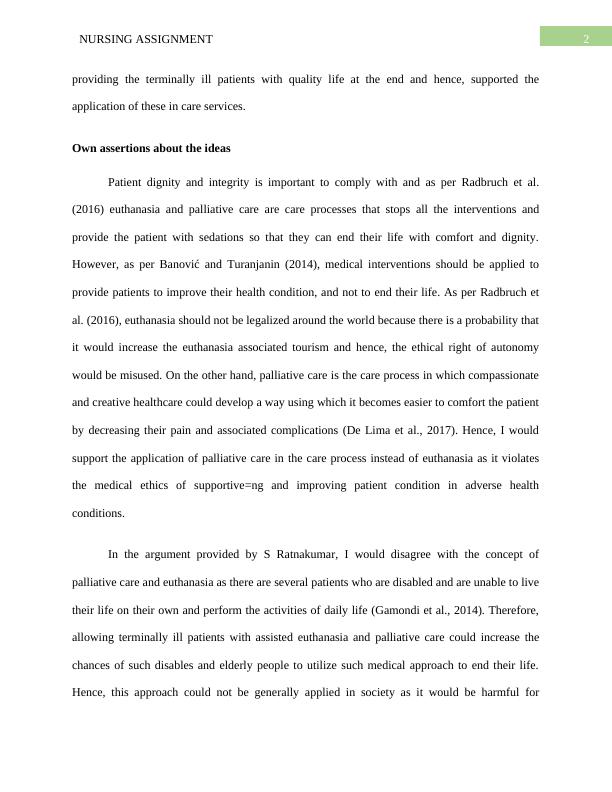S Ratnakumar’s Argument about Palliative Care and Euthanasia
Critique and Evaluation Tutor-Marked Assignment for COM103e course in January 2019 Semester.
6 Pages1525 Words248 Views
Added on 2023-04-22
About This Document
This nursing assignment discusses S Ratnakumar’s argument about palliative care and euthanasia, their application in care services, and their impact on patient dignity and integrity.
S Ratnakumar’s Argument about Palliative Care and Euthanasia
Critique and Evaluation Tutor-Marked Assignment for COM103e course in January 2019 Semester.
Added on 2023-04-22
ShareRelated Documents
End of preview
Want to access all the pages? Upload your documents or become a member.
Euthanasia and its Importance in Severely Ill Patients Life
|5
|1228
|208
End of Life Care: Legal and Ethical Considerations
|4
|653
|331
Health Ethics
|4
|531
|147
Palliative care for Stage Four Colorectal Metastatic Cancer and role of Passive Euthanasia in Dying Essay 2022
|10
|3333
|20
NURSING Euthanasia is not an ethical option
|4
|890
|199
Noel Conway: Terminally - ill man loses assisted dying challenge
|5
|801
|440



